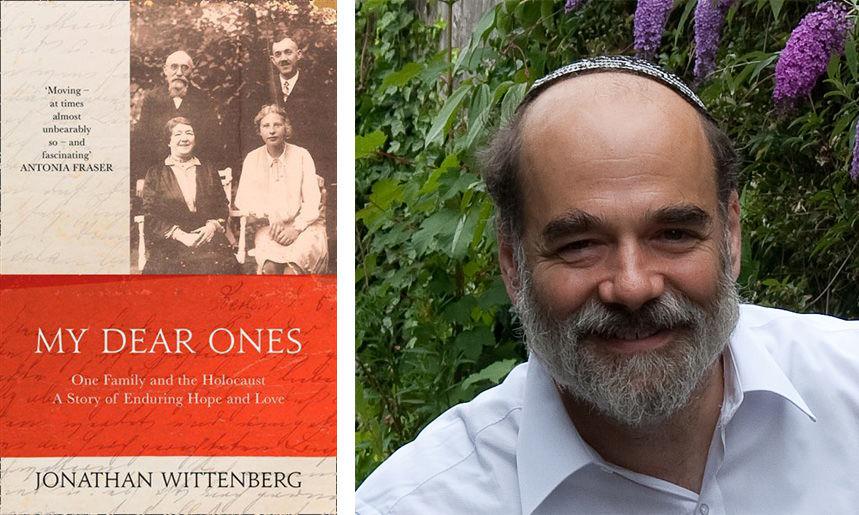Fading letters reveal family’s Holocaust story
Published July 26, 2018
While Rabbi Jonathan Wittenberg of New North London Synagogue was in Jerusalem visiting his father’s family, his father’s sister, Steffi, passed away. After Steffi’s burial, Wittenberg and his cousin Michal (Steffi’s daughter), began to clear the flat where Steffi had lived since fleeing Germany in the 1930s. Inside an old suitcase abandoned on the balcony, they discovered a linen bag containing a bundle of letters untouched for decades.
Glancing through a few of these letters, mostly written in German, Wittenberg noted that the bulk of the letters were dated 1938 through 1939, although a number of them were written as late as 1948. They were primarily from his great-grandmother, Regina, to her daughters, his grandmother Ella and his great aunt Sophie, as well as to other aunts and uncles.
Michal allowed Wittenberg to take the bag back to London, where his father, although seriously ill, remembered that in 1937 Sophie visited the branch of the Wittenberg family that had left Germany to reside in Palestine. Wittenberg’s father warned Sophie not to return to Czechoslovakia, where she and her husband, a wealthy Czech nationalist, resided. According to Jonathan’s father, “Sophie wouldn’t hear of it,” thereby sealing her fate.
A year after Wittenberg returned to England, his father passed away and Wittenberg then began to organize and file the letters he had brought from Jerusalem. Although he had grown up in Britain, Wittenberg was well aware of his legacy as the child of refugees from Nazi Germany. He became captivated by these faded and difficult to decipher letters. They served as the catalyst to uncover the painful details of his father’s family history, and ultimately they became the basis for his book “My Dear Ones: One Family and the Final Solution,” which ties together the story of an ancient rabbinical family with the history of Europe during World War II, culminating in the policies of the Nazis and the ensuing Holocaust.
Numerous books have been written about the Holocaust and the author makes good use of most of them. Wittenberg’s book, however, differs from other dealing with the Final Solution in two ways: his book chronicles one family, his own, and the people involved are identified by name rather than remaining nameless and faceless individuals. Wittenberg employs a very useful family tree inside the book’s cover to identify four generations of his ancestors and it is one of the book’s major assets.
Initially all is quiet in Germany, and the Jewish community is lulled into a sense of false security. What follows, of course, is well documented. Adolf Hitler and the Nazi Party begin their attempt to systematically expel all Jews from Germany; many of them hurriedly left for Palestine. For the Jews who remained, the Nazis initiated a system limiting their public rights; Kristallnacht followed and the looting of Jewish businesses began. All of these events culminated in the Holocaust—the methodical murder of millions of Jews.
Wittenberg’s powerful book is both well researched and well written, but it is not an easy book to read. In fact, at times the book is heartbreaking and intolerably difficult to experience. For example, Regina Freimann, the matriarch of the family and Jonathan Wittenberg’s great-grandmother, resided in Berlin. She had the opportunity to join her children who had safely reached Palestine. Fearful that she would be a burden to them, she refused to leave. Her daughter Sophie and son-in-law Josef Redlich rescued her from Berlin and took her to the “safety” of Czechoslovakia.
One of the last letters Rabbi Wittenberg read was written by Sophie in 1943 to her brother Alfred in Palestine. She informs him that she, Josef and Regina were about to be deported to Theresienstadt to eventually be taken to Poland. She ended the letter by telling her brother where the family could look for her after the conclusion of the war.
Wittenberg has helped readers of this book better understand that although the number six million might be difficult to grasp, it is the individual stories such as Regina’s that help make up the larger historical narrative. This is a book well worth reading.















